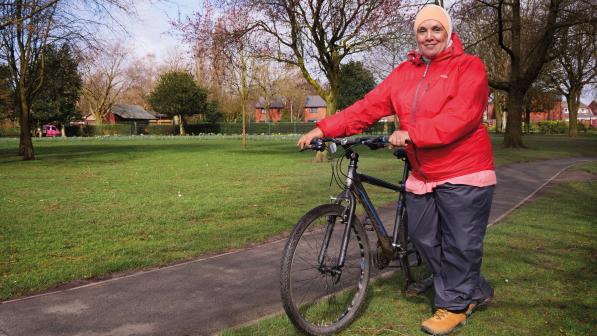What is behaviour change and how does it apply to cycling?

The Covid-19 outbreak has had a profound effect on all aspects of life, including in the way we travel.
A poll carried out by YouGov on behalf of Cycling UK found that 36% of people questioned agreed they could rethink their travel habits in the future to use cars and motor vehicles less.
But how do we go about encouraging those who are thinking about driving less and perhaps cycling more to make getting out on bike a new post-lockdown habit?
We have been campaigning for local authorities to introduce measures for temporary cycling infrastructure to help with social distancing, which can’t be achieved with pre-lockdown levels of public-transport use. But to make use of these spaces, people also need the confidence to do so and the feeling that these spaces are for them.
Fortunately, Cycling UK has some experience of how to empower people to cycle from before the pandemic took hold, and we can use that experience to guide us.
James Scott, Cycling UK’s director of behaviour change and development, explains: “Behaviour change helps us to dissect what lies beneath a behaviour and look at the aspects that underpin it, such as attitudes, social norms and motivation. At Cycling UK, our mission is to increase cycling participation, using a simple three-stage method to encourage people onto bikes: the Fix, Learn and Ride model.”
That is the model that is used within the Department for Transport-funded Big Bike Revival programme, which aims to increase the number of people cycling and the number of short trips made by bike. The model is devised from two in-depth behaviour-change theories, the COM-B model and the self-determination theory.
What is COM-B?
It stands for capability, opportunity, motivation and ultimately behaviour and recognises that the three elements interact, with one or more needing to change to make lasting change possible
- Capability is the psychological and physical ability to perform a behaviour. In the case of BBR, the Learn section, where participants of the programme need to have the capability to ride a bike. We not only address their physical riding skills, but also look at their attitudes towards cycling and any perceptions of fear holding them back.
- Opportunity looks to address all factors that are external to an individual. This may be the environment (potentially socio-economic or physical), tools to conduct the behaviour or cultural background. This is where we use Fix, from our model. We know that 42% of people own a bike but don’t use it, so fixing people’s bikes is a core part of BBR delivery. Allowing more working bikes to be used within a community also helps create a social norm, which then encourages more people to think about applying this in their life.
- Motivation, this includes goal setting, plans and the automatic processes that involve emotion and habit. For the BBR programme, this is the Ride phase. Once participants have had their bikes fixed and have learnt riding skills, we set up community cycle clubs, which allow like-minded people to ride together and motivate each other.
The community cycle clubs which Cycling UK works with also play a key role in BBR in terms of sustaining change, though here is where self-determination theory (SDT) applies. This theory highlights three basic human needs: competence, autonomy and relatedness. The last of these considers the importance humans place on being connected to others and feeling a sense of belonging. Through connecting with community clubs, participants can become motivated to persevere via a sense of belonging to a group and camaraderie.
Behaviour change helps us to dissect what lies beneath a behaviour and look at the aspects that underpin it, such as attitudes, social norms and motivation
James Scott, Cycling UK's director of behaviour change and development
Another Cycling UK project, Cycle for Health, was designed with health experts, based on NICE guidance on successful behaviour change techniques to refer people in West Yorkshire to a small group cycling course to benefit their physical and mental health.
The scheme used the Prime model, a system of motivation with five different levels that encourages people to set goals and plan for successful outcomes. As well as looking at participants motives, the model also considers their responses, impulses, evaluations and plans.
James says: “The action of going for a bike ride is simple enough, but creating a pro-cycling culture is a little harder. At Cycling UK, we have proven that following the simple Fix, Learn and Ride model, which is underpinned by clear behavioural science, has been extremely effective."
The figures back this up. In 2018-19, more than 60,000 people engaged in the Big Bike Revival in England and Scotland, and to date Cycling UK has set up more than 500 community clubs.
We have all undergone a massive social experiment of sorts in the past 16 weeks with many aspects of our behaviour changed by the reality of a global health crisis. The pre-pandemic models will have to adapt somewhat to the changing world, James believes, but will continue to offer us insights into why people do what they do.









